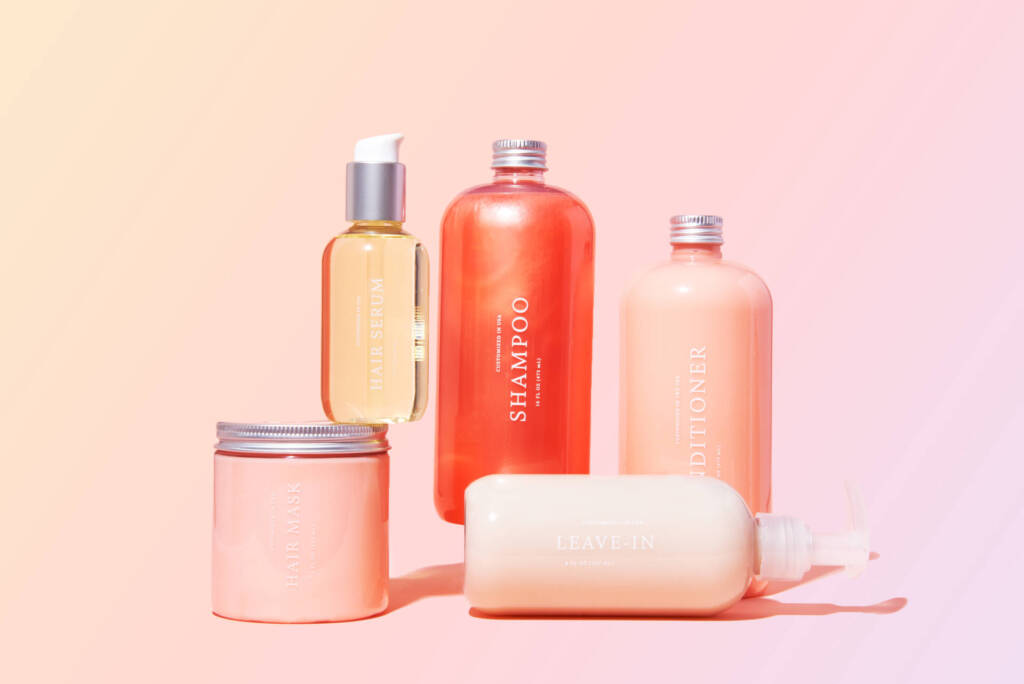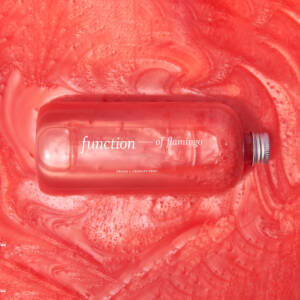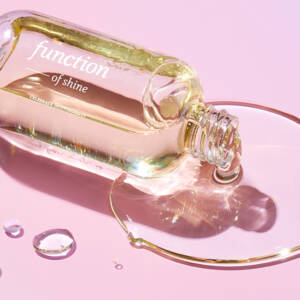Is your hair smooth and shiny yet becomes greasy at the mere touch of hair oils? Does your mane take a while to get wet in the shower and dry ever so slowly? If so, you may have low porosity hair.
Although it might not be talked about as often as other hair topics, hair porosity — aka your hair’s ability to absorb and maintain moisture — plays a key role in dictating which hair care products are ideal for your tresses.
Below, we share everything you need to know about low porosity hair, from how to tell if you belong to this hair category to the best practices that can keep it well-hydrated and strong.
What Is Low Porosity Hair?
Low porosity hair features tightly aligned cuticles that act as a “stop” sign for moisture trying to enter and exit the hair shaft. It typically occurs in straight hair types and is generally associated with fewer “pores” in the hair cuticles (the outer protective layer of your strands). As such, low porosity hair is often viewed as minimally damaged fibers compared to more porous hair.
Although it’s challenging to moisturize, this hair type retains hydration pretty well once water molecules and moisturizing compounds make it past the cuticle. On the contrary, high porosity hair has very loose cuticles, creating more opportunity for moisture to go in and out. That’s why more porous hair rapidly absorbs water and other moisturizing agents but loses moisture equally fast.
To understand why low porosity hair doesn’t absorb moisture well, we first need to look at the hair cuticle.
All About the Cuticle
The cuticle is the outermost protective layer of the hair fiber. It’s made up of several overlapping layers of flat, hard cells that line the root to the tip in a scale-like fashion. These cells are symmetrically distributed in straight hair fibers and non-symmetrically in curly to coily strands, which is why there’s varying hair porosity in different curl types.
You can think of hair cuticles as neatly arranged tiles on a roof for the straight-hair folks compared to haphazardly placed tiles for the curlier hair population. As a general rule of thumb, straight hair types usually have low porosity. That said, it’s possible that a few of your curly hair friends also have moisture-resistant fibers.
The main goal of the cuticle layer is to protect the inner hair structure from external damage, which creates even more pores in the hair shaft, hence the term “porosity.”
Most of us typically encounter some degree of hair damage due to:
- Daily wear and tear (cue the tug ‘o’ war with our hairbrushes!)
- Environmental factors like ultraviolet (UV) rays and pollutants
On top of that, chemical and cosmetic factors like bleaching, hair dyes, and heat styling can raise the cuticles even higher. This creates more gaps and tears in the hair fibers, transforming them into high porosity hair.
How to Tell if You Have Low Porosity Hair

Wondering if you have low porosity hair? You don’t need to be a scientist to try one of these three simple tests.
The Float Test
Take a few strands of hair (naturally shed or plucked), and drop them into a glass of water that’s room temperature. After a few minutes, less porous hair will remain floating at the top, while more porous hair will sink to the bottom. If the strands float somewhere in the middle, that means you have normal porosity hair.
The Spray Bottle Test
Spray a fine mist on your hair ends and observe the movement of the water droplets closely. If the water beads up and/or rolls off the shafts, you likely have low porosity hair.
The Slip ‘N’ Slide Test
Slide your fingers through a dry strand of hair from the tip to the root in an upward direction toward your scalp. If the strand feels dense and relatively smooth, your hair ranks low on the porosity scale.
What’s (Not) to Love About Low Porosity Hair
We’ve just established that low porosity hair is synonymous with minimally damaged fibers, so what’s not to love? The reason is simple: its poor affinity for moisture can cause some hair-y issues.
A Greasy Appearance
If you often gripe about how rich hair products never seem to fully sink into your fibers, know that you are not alone. With a closed-off cuticle, it’s pretty much impossible for hair lotions, creams, and oils to completely absorb into the hair shaft. Instead, most of the product remains on the outer surface, causing your mane to look greasy instead of glossy.
Not to forget, the geometry of straight hair strands makes it even easier for the product to slide down to the hair ends, possibly smearing your favorite top. To top it all off, your tresses remain as dry as ever after you’ve washed off all the product.
A Lack of Volume
Even though you rarely have to worry about frizz with low porosity hair, your locks often fall prey to flatness. Not only do heavy styling products grease up your strands, but they can also weigh down your hair easily. Skipping out on your wash days and relying solely on dry shampoo creates even more product buildup that snuffs out any chance for volume and bounce.
Hair Care Tips and Products: 4 Best Practices to Follow
The silver lining for low porosity hair is that it’s relatively undamaged. As such, it may not need as much care as high porosity hair does. Still, your hair can definitely benefit from some tender loving care. The trick is to focus on what low porosity hair needs (i.e., moisture that actually penetrates the fiber) and doesn’t need (aka more product buildup).
1. Use a Shampoo That Clarifies and Volumizes
On your wash days, use a shampoo with clarifying properties to help get rid of natural and artificial residues on your strands and scalp. Opt for one that’s sulfate-free to avoid over-drying your hair, especially when it’s already having a hard time absorbing moisture. If possible, go for a shampoo that also volumizes to lift up your locks.
Can’t find a low porosity hair product that ticks off all the right boxes? Try Function of Beauty’s custom shampoo. Unlike regular clarifying shampoos that can only be used occasionally, our customizable formulation allows you to build a daily shampoo specific to your hair needs. When taking our hair quiz, add hair goals like “soothe scalp” and “volumize” to create a shampoo that can do it all for low porosity hair.
Pro tip: When shampooing your hair, focus on the roots to remove scalp sebum (oil) and product buildup more effectively.
2. Opt for Lightweight Yet Hydrating Ingredients
Hydrating low porosity hair need not turn into an oil-slicked nightmare if you know which types of moisturizers to look for in the ingredient list. Your best bets are humectants and emollients.
Humectants
Humectants have a low molecular weight, meaning they are petite enough to enter the hair shaft through the small spaces between the cuticle scales. What’s more, humectants can attract water from the surrounding air into the fiber to boost its hydration levels. Two popular humectants are aloe vera and glycerin.
Emollients
Emollients are another class of moisturizing agents. Commonly used in skin care, emollients have also found their way into countless haircare products, particularly conditioners. These moisturizers form a thin film on the hair shaft to aid in moisture retention and boost shine. Some prominent emollients include shea butter, argan oil, coconut oil, and silicones.
3. Amp Up the Conditioning
Low porosity hair needs moisturizing products that can sink into the shafts without leaving an oily residue. That’s why rinse-out conditioners and deep conditioning treatments are your BFFs. They sit on your strands long enough for an intense moisture surge, then wash off to leave your strands soft and hydrated, minus the grease.
Less porous hair can also work well with a leave-in conditioner, provided that it’s lightweight and contains specific moisturizing agents (read: humectants and emollients).
Two good options would be Function of Beauty’s custom hair mask (for in-shower use) and custom leave-in treatment (for post-shower use) on days when your strands need a moisture boost. Both conditioning hair products are suitable for hydrating low porosity hair. Simply pick hair goals like “deep condition” and “hydrate” when taking our hair quiz.
Pro tip: Apply conditioner from the mid-lengths to the hair ends, carefully avoiding the scalp. Doing so helps prevent product buildup and a greasy hair appearance.
4. Turn Up the Heat (But Not Heating Tools)
We’ve saved the most important question for the last: How do you make sure the nourishing, moisturizing goodness in your hair products actually make it into the fibers? The answer: Add warmth to open up the cuticle layer. And no, we’re not talking about heating tools like blow dryers or curling irons.
Here’s what to do:
- Apply your conditioner of choice to clean, damp hair.
- Use a hooded dryer or steamer to warm up the hair follicles and temporarily open up the cuticles. You can even settle for a good ol’ shower cap over your mane.
- Wait for the appropriate amount of time (as specified on the product packaging), then rinse off the conditioner with cold water to close up the cuticles and seal in the moisture. (Skip this last step for leave-in treatments).
Low Porosity Hair Can Look and Feel Its Best
And there you have it — low porosity hair isn’t as bad as you think. Thanks to fewer pores on its cuticles, it’s the closest thing to undamaged hair fibers (aka relatively healthy hair) and can do well on a low-maintenance routine.
Sure, there may be a few downsides to less porous hair, mainly due to its resistance to water and moisture. Other than the regular trim to snip off split ends, the right low porosity hair products — coupled with appropriate hair care practices — will have your locks looking and feeling their best.





